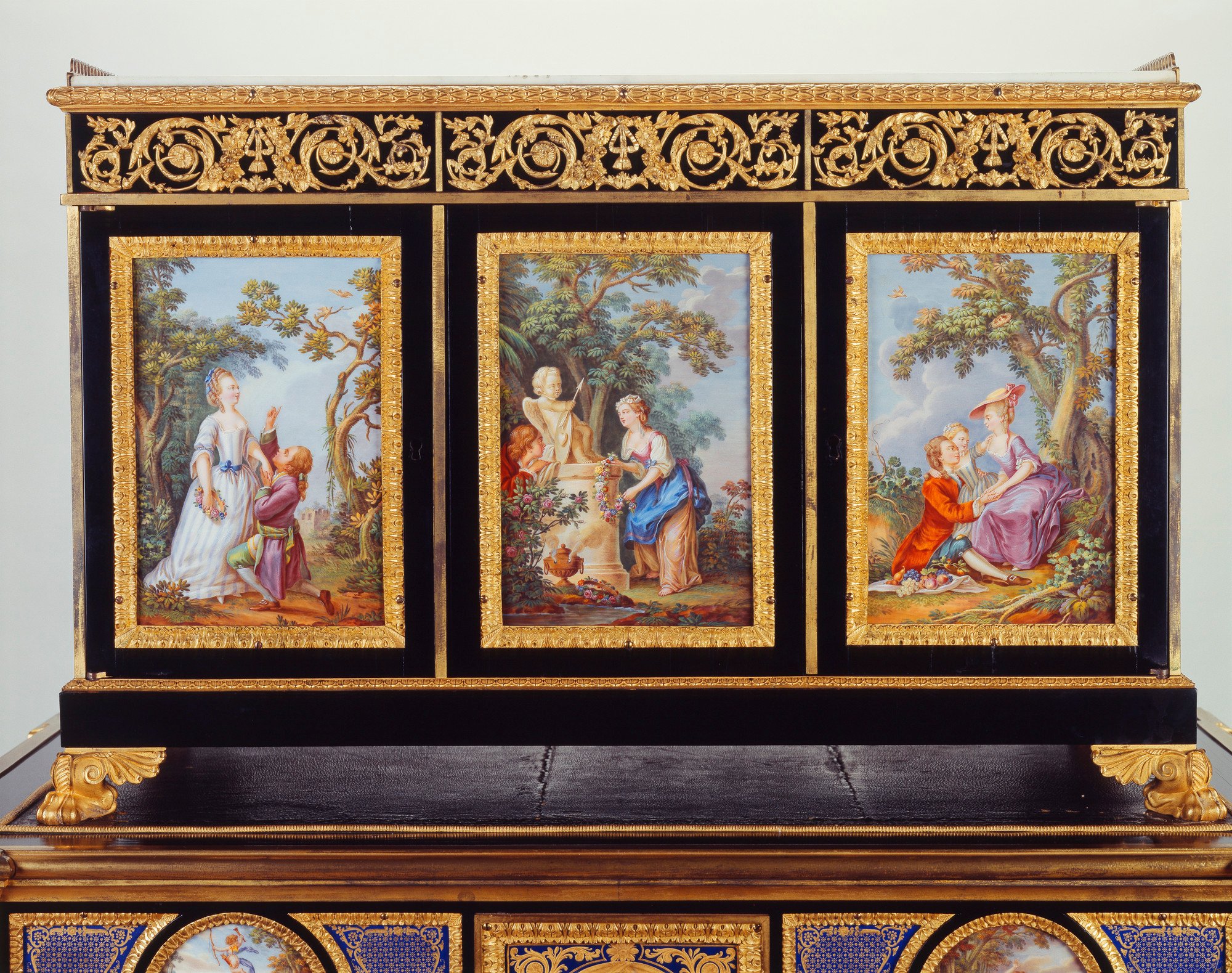
George IV and French Furniture
French furniture collected by a true Francophile
Commode (commode à vantaux)
1778RCIN 2588
The panels on this ebony veneered commode probably came from one of the great seventeenth century cabinets in the French Royal Gobelins workshops. Most of these expensive cabinets were broken up in the eighteenth century when they fell out of fashion, but the pietra dura panels were kept as precious objects in their own right. With the revival of interest in the Louis XIV period during the 1760s and 1770s, these panels began to be recycled on neo-classical furniture. Marchands-merciers (dealer-decorators) like Dominique Daguerre (active 1772–96) specialised in bringing together expensive materials, such as lacquer panels or pietra dura plaques, and having them assembled into magnificent furniture. It was probably Daguerre who commissioned this ambitious piece from Martin Carlin, one of a group of cabinet-makers who worked more or less exclusively for Daguerre.
The commode’s first owner was the notorious Parisian opera singer Marie-Josephine Laguerre (1754–82). Afterwards it belonged to Baron de Besenval, Colonel of the Swiss Guards and friend of Marie-Antoinette. It was acquired in 1828 in Paris by George IV through his confectioner François Benois.







